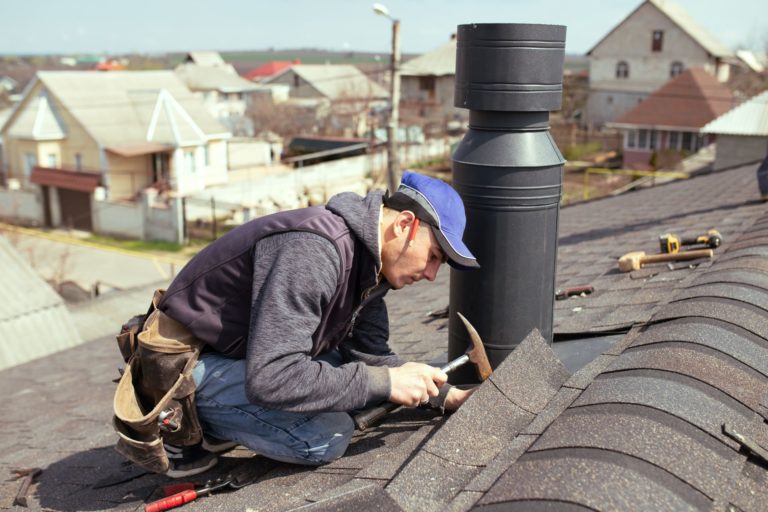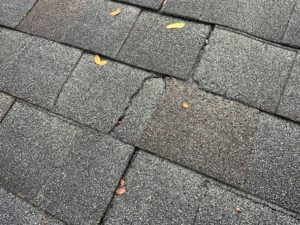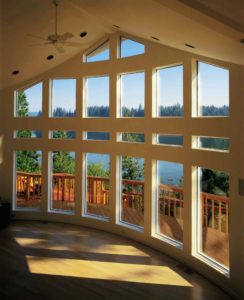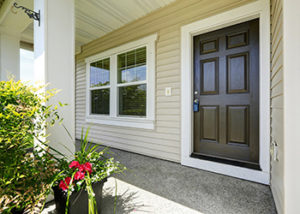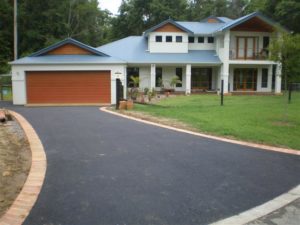Asphalt shingles are a popular choice for many homeowners due to their durability and affordability. However, like all roofing materials, they are not immune to damage and wear over time. Identifying and addressing these issues early on can save you money and prevent further damage to your home. Knowing what to look for can also make it easier to communicate with roofing professionals when repairs are needed.
Understanding the common problems that affect asphalt shingle roofs is essential for maintaining the integrity of your home. From curling and buckling shingles to leaks and water damage, each issue presents its own set of challenges and can lead to more significant problems if left unaddressed. Being able to identify these problems quickly and accurately can help you take timely action to protect your roof and your home.
In this article, we will explore some of the most common asphalt shingle roof repairs and how you can recognize the signs of these issues. Whether you’re dealing with missing shingles or granule loss, this guide will provide the information you need to maintain a sturdy and reliable roof. Let’s dive into the specifics and help you get ahead of any potential roofing problems.
Curling and Buckling Shingles
Curling and buckling shingles are common problems that can compromise the effectiveness of your roof. Curling occurs when the edges of the shingles lift and bend upwards, creating a wave-like appearance on your roof. Buckling, on the other hand, involves the shingles becoming distorted and raised in the middle. Both issues can result from several factors, including moisture buildup, poor ventilation, and age.
To identify curling and buckling shingles, regularly inspect your roof from the ground or, if safe, from a ladder. Look for areas where the shingles appear to be lifting or have a wavy texture. These are signs that the shingles are not lying flat against the roof, which can make your roof vulnerable to water infiltration and wind damage.
Addressing curling and buckling shingles is crucial to maintaining your roof’s integrity. In many cases, minor curling can be temporarily repaired by re-adhering the shingles with roofing cement. However, if the problem is widespread or severe, it may be necessary to replace the affected shingles or even the entire roof. Consulting with a professional can help determine the best course of action to protect your home.
Missing Shingles
Missing shingles are another prevalent issue that can leave your roof exposed to the elements. Strong winds, heavy rain, and physical impact are common causes of shingles coming loose and falling off. Identifying missing shingles is relatively straightforward, as you will notice gaps on your roof where shingles should be.
To spot missing shingles, walk around your property and visually inspect the roof. Look for bare patches where the underlayment or the wood deck is visible. Missing shingles can lead to leaks and water damage, so it’s essential to address the issue promptly.
Replacing missing shingles is often a simple repair that can be done by a professional roofer. They will remove the damaged shingles and replace them with new ones, ensuring that they blend seamlessly with the existing roof. This repair helps maintain the roof’s watertight barrier, preventing further damage and extending the life of your roof.
Granule Loss
Granule loss is a common issue that affects asphalt shingles as they age. Granules are the tiny, gravel-like particles on the surface of the shingles that protect them from UV rays and add an extra layer of durability. Over time, these granules can wear off due to weathering, foot traffic, or poor installation.
To identify granule loss, check your gutters and downspouts for an accumulation of granules. You may also notice bald patches on the shingles where the granules have worn away. Without granules, shingles become more susceptible to damage from the sun and weather elements, which can shorten their lifespan.
If you observe significant granule loss, it’s essential to take action. While some granule loss is natural over the life of the roof, excessive granule loss can indicate that the shingles are nearing the end of their useful life and may need to be replaced. A roofing professional can assess the extent of the issue and recommend whether a repair or replacement is necessary to maintain your roof’s protective capabilities.
Leaks and Water Damage
Leaks and water damage are critical issues that can stem from various problems with your asphalt shingle roof. Leaks often occur due to missing or damaged shingles, improper flashing, or clogged gutters. Water can seep into your home, causing damage to the interior and compromising the structural integrity of the roof.
To identify leaks, look for water stains on your ceiling or walls, especially after a rainstorm. You might also notice damp insulation in your attic or a musty odor indicating moisture buildup. Early detection of leaks is vital to preventing more extensive and costly repairs.
Repairing leaks typically involves identifying the source of the water infiltration and addressing it directly. This can mean replacing missing or damaged shingles, resealing flashings, or clearing out clogged gutters. In some cases, a full roof inspection may be needed to ensure there are no other underlying issues that could cause future leaks. Promptly addressing leaks and water damage is essential for protecting your home and maintaining a solid, leak-free roof.
Curling and Buckling Shingles
Curling and buckling shingles are common issues that can affect the effectiveness of your roof. Curling happens when the edges of the shingles lift and bend upwards, creating a wave-like look. Buckling, on the other hand, occurs when shingles become distorted and raised in the middle. These problems can result from moisture buildup, poor ventilation, or simply the age of the shingles.
To spot curling and buckling shingles, regularly inspect your roof from the ground or, if safe, from a ladder. Look for areas where the shingles are lifted or have a wavy appearance. These are signs that the shingles are not lying flat against the roof, which can make your roof more vulnerable to water infiltration and wind damage.
Taking action to fix curling and buckling shingles is crucial for maintaining your roof’s integrity. Minor curling can sometimes be repaired by re-adhering the shingles with roofing cement. However, if the problem is widespread or severe, it may require replacing the affected shingles or even the entire roof. Consulting with a professional can help determine the best course of action to protect your home from potential damage.
Missing Shingles
Missing shingles present a significant risk as they expose your roof to the elements. Strong winds, heavy rain, and even physical impact can cause shingles to come loose and fall off. Identifying missing shingles is relatively easy, as you will see gaps on your roof where shingles should be.
To find missing shingles, walk around your property and visually inspect the roof. Look for bare patches where the underlayment or the wood deck is visible. Missing shingles can lead to leaks and water damage, so addressing the issue promptly is essential.
Replacing missing shingles is usually a straightforward repair that can be completed by a professional roofer. They will remove the damaged shingles and replace them with new ones, ensuring they blend seamlessly with the existing roof. This repair helps maintain the roof’s watertight barrier, preventing further damage and extending the life of your roof.
Remember that a single missing shingle can lead to more problems if not fixed immediately. Water can seep into your home through the exposed areas, causing interior damage. Regularly checking your roof and replacing missing shingles will contribute to a long-lasting and durable roof.
Granule Loss
Granule loss is a common issue that affects asphalt shingles as they age. Granules are tiny, gravel-like particles on the surface of the shingles that protect them from UV rays and add an extra layer of durability. Over time, these granules can wear off due to weathering, foot traffic, or poor installation, leaving the shingles more vulnerable to the elements.
To spot granule loss, check your gutters and downspouts for an accumulation of granules. You might also see bald patches on the shingles where the granules have worn away. Without these granules, shingles become more susceptible to damage from sunlight and harsh weather, which can significantly shorten their lifespan.
If you observe significant granule loss, it’s essential to take action. While some granule loss is natural over the life of the roof, excessive granule loss can indicate that the shingles are nearing the end of their useful life and may need to be replaced. A roofing professional can assess the extent of the issue and recommend whether a repair or replacement is necessary to maintain your roof’s protective capabilities.
Leaks and Water Damage
Leaks and water damage are critical issues that can stem from various problems with your asphalt shingle roof. Leaks often occur due to missing or damaged shingles, improper flashing, or clogged gutters. Water can seep into your home, causing damage to the interior and compromising the structural integrity of the roof.
To identify leaks, look for water stains on your ceiling or walls, especially after a rainstorm. You might also notice damp insulation in your attic or a musty odor indicating moisture buildup. Early detection of leaks is vital to preventing more extensive and costly repairs.
Repairing leaks typically involves identifying the source of the water infiltration and addressing it directly. This can mean replacing missing or damaged shingles, resealing flashings, or clearing out clogged gutters. In some cases, a full roof inspection may be needed to ensure there are no other underlying issues that could cause future leaks. Promptly addressing leaks and water damage is essential for protecting your home and maintaining a solid, leak-free roof.
Conclusion
Maintaining an asphalt shingle roof requires vigilance and timely repairs. Identifying common issues like curling or buckling shingles, missing shingles, granule loss, and leaks can prevent more significant problems down the road. Regular inspections and knowing what to look for can make a big difference in the longevity and effectiveness of your roof. Acting quickly to address these issues will save you money and stress, ensuring your home remains safe and sound.
If you notice any signs of roof damage, don’t wait for the problem to escalate. Taking care of minor repairs early on can prevent the need for more extensive and expensive fixes later. A well-maintained roof protects your home and enhances its value and aesthetic appeal.
For expert assistance with your roofing needs, contact Lighthouse Exteriors. Our team of professionals is ready to help you keep your roof in top condition. Reach out to Lighthouse Exteriors today to schedule an inspection or residential roof repair service and ensure your home is well-protected.

